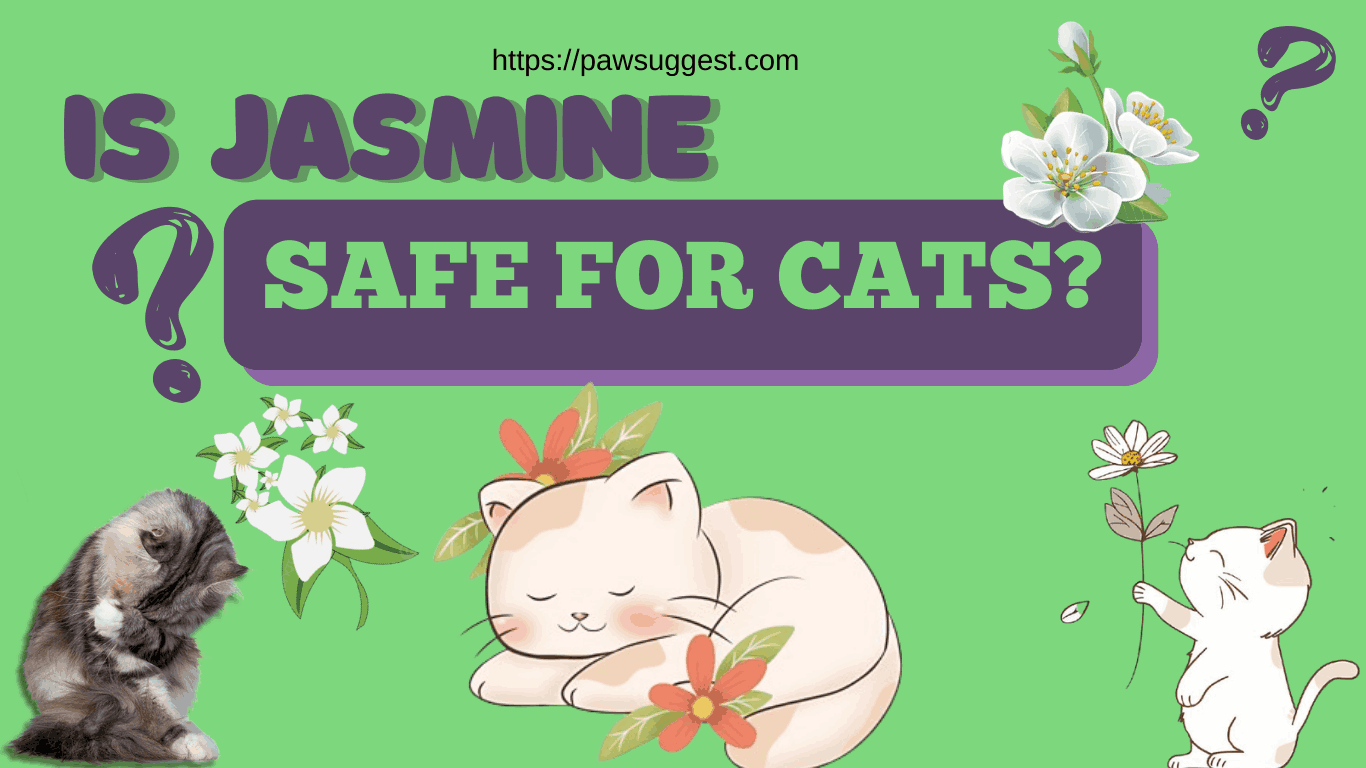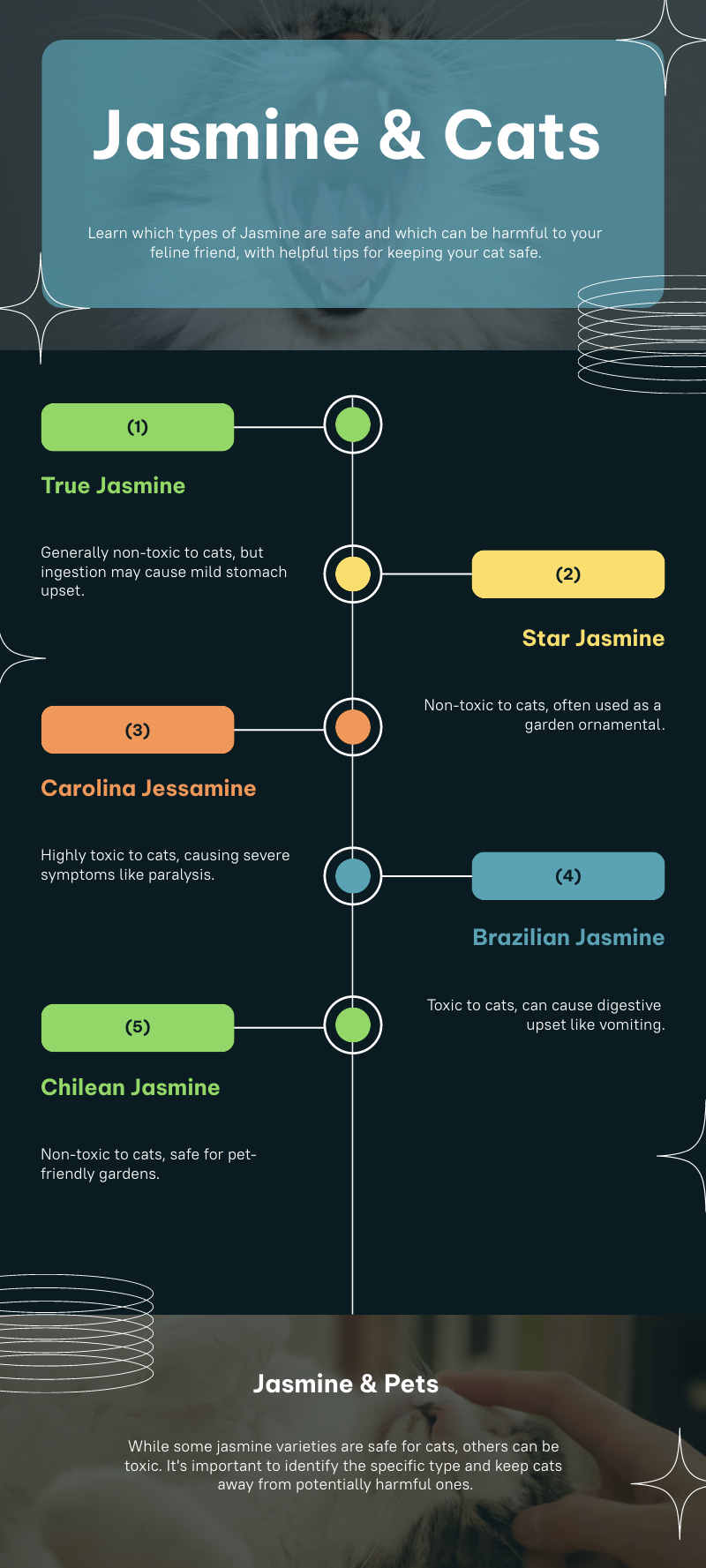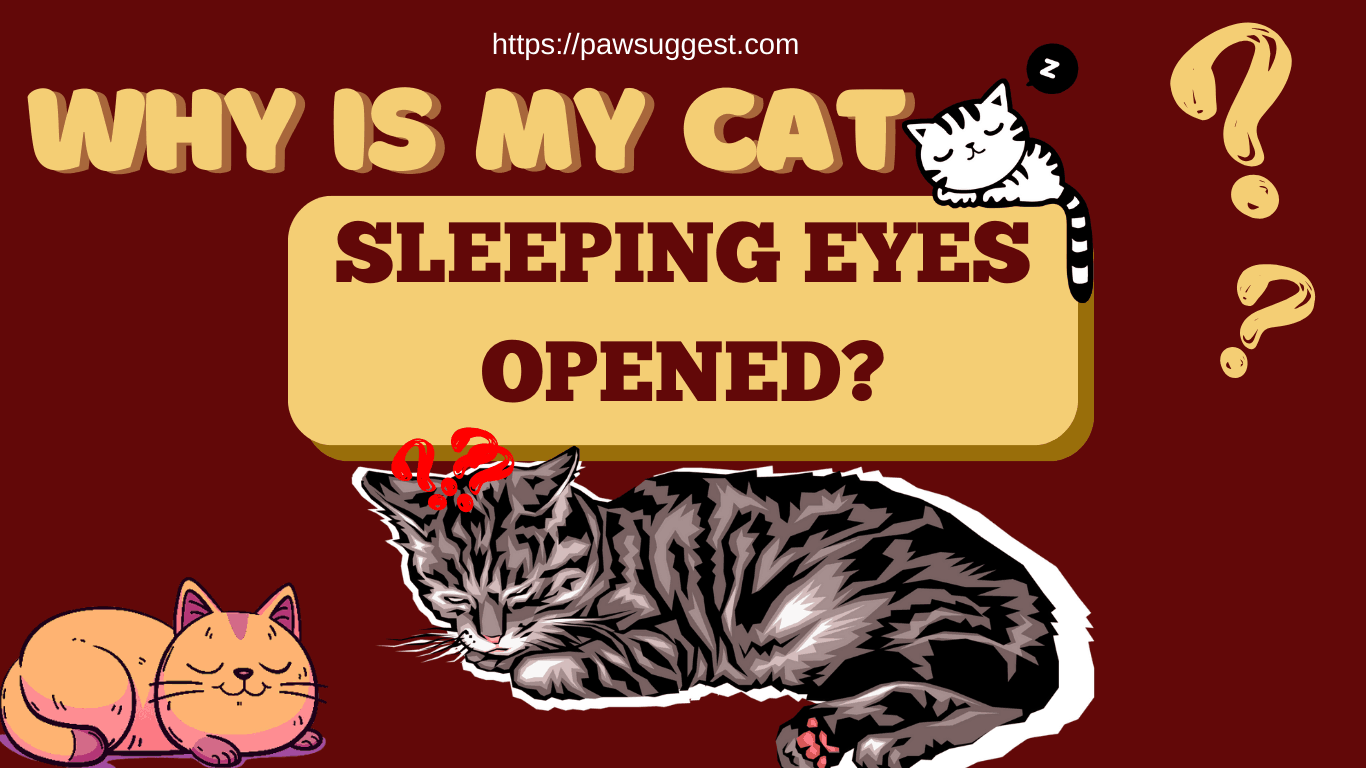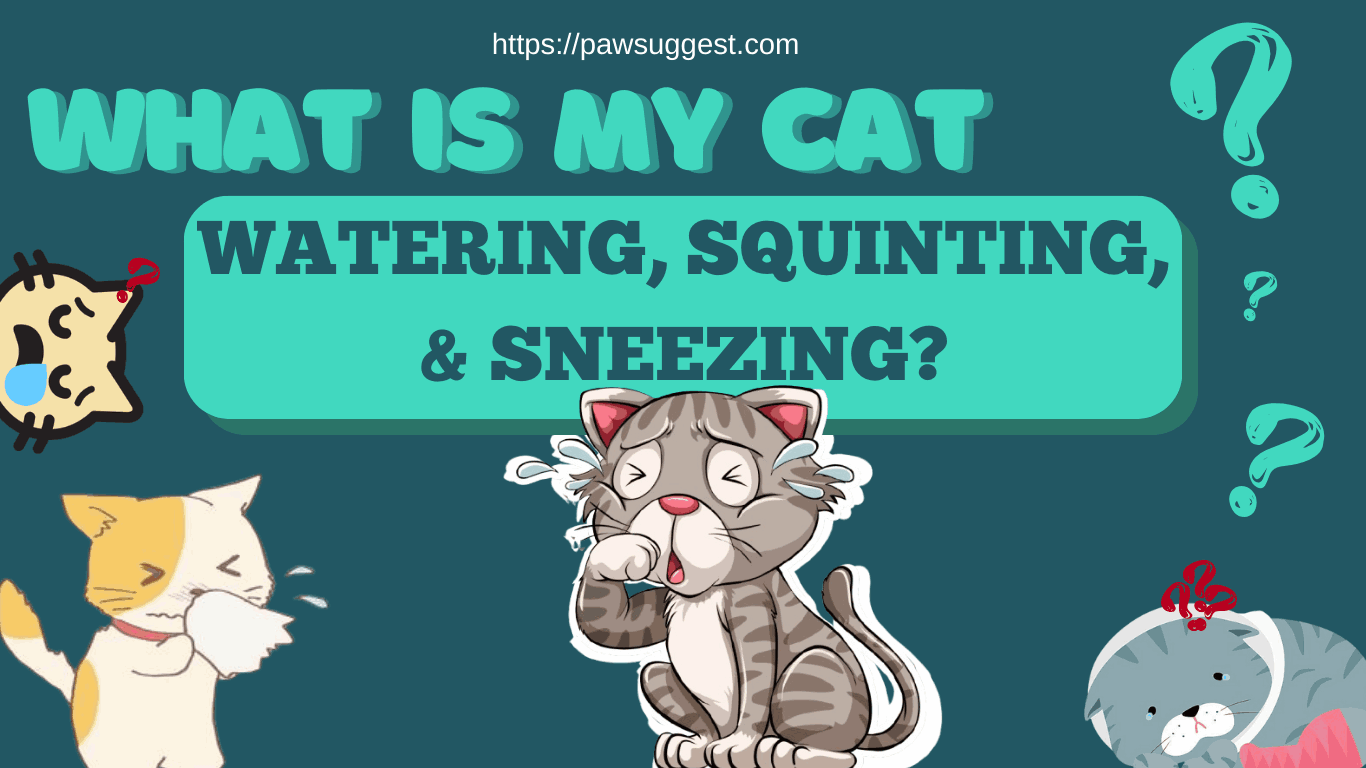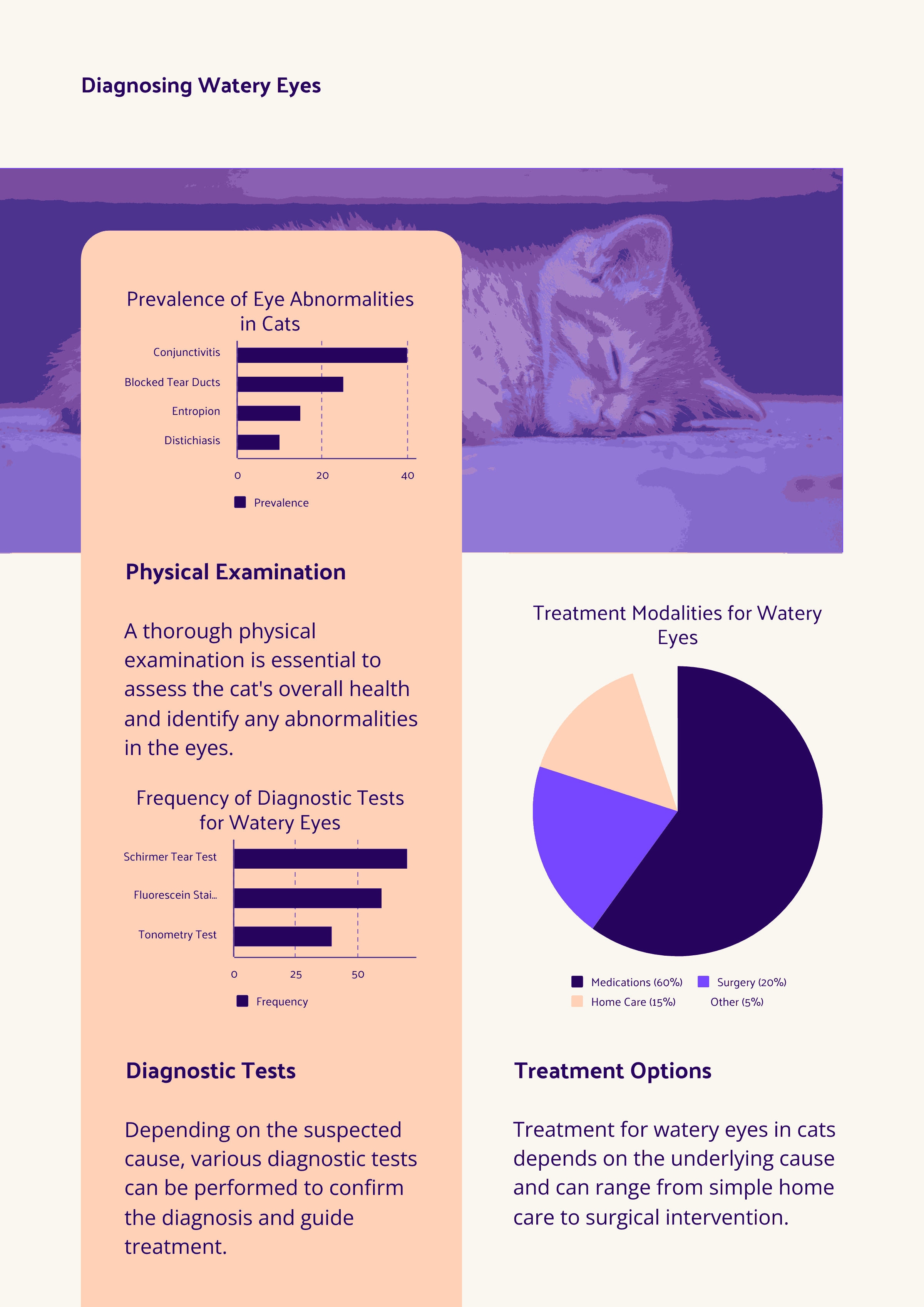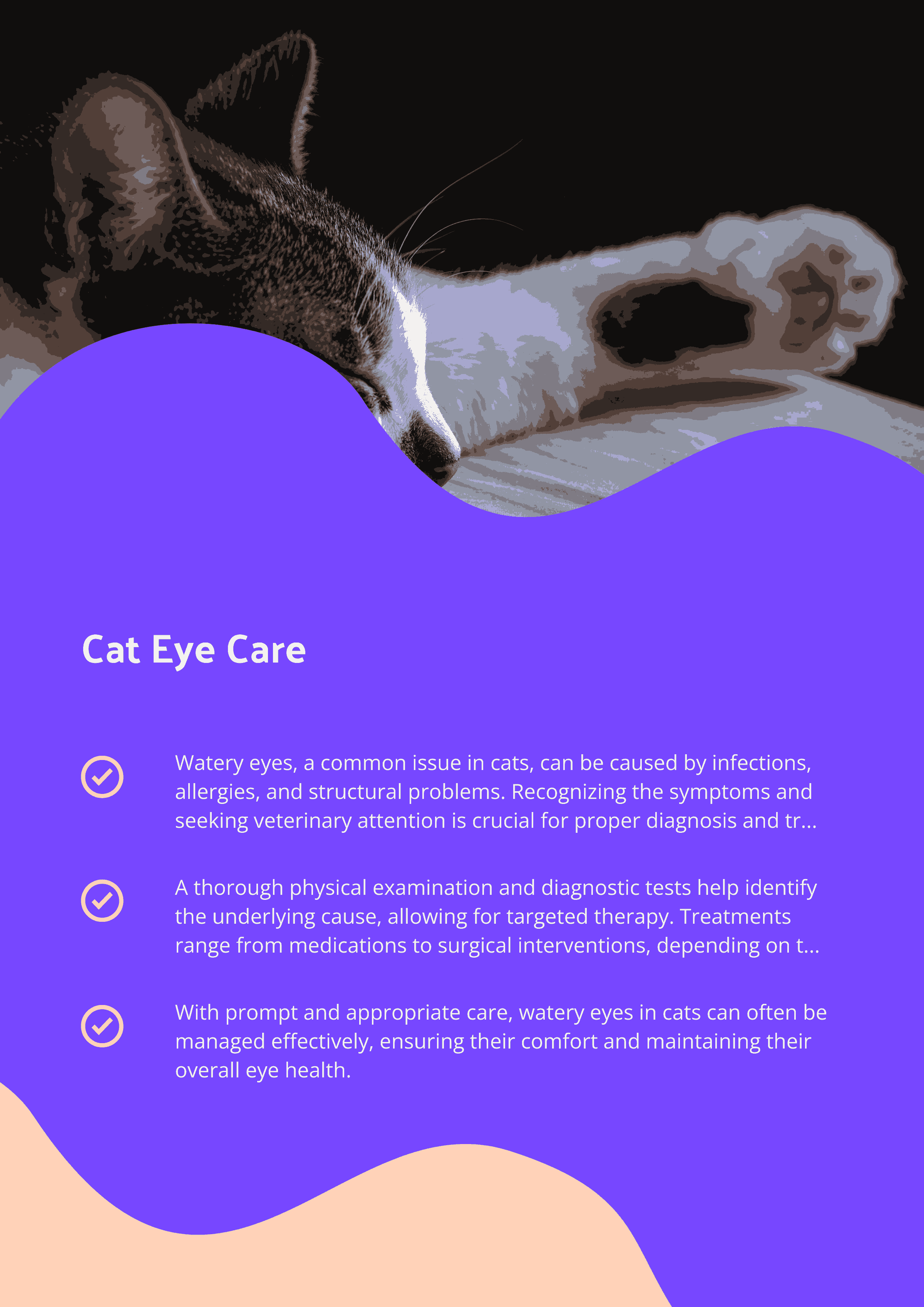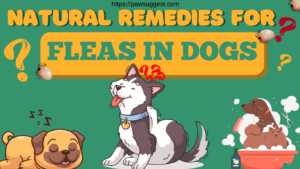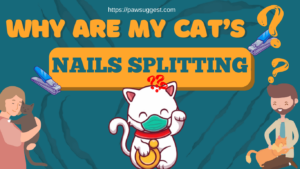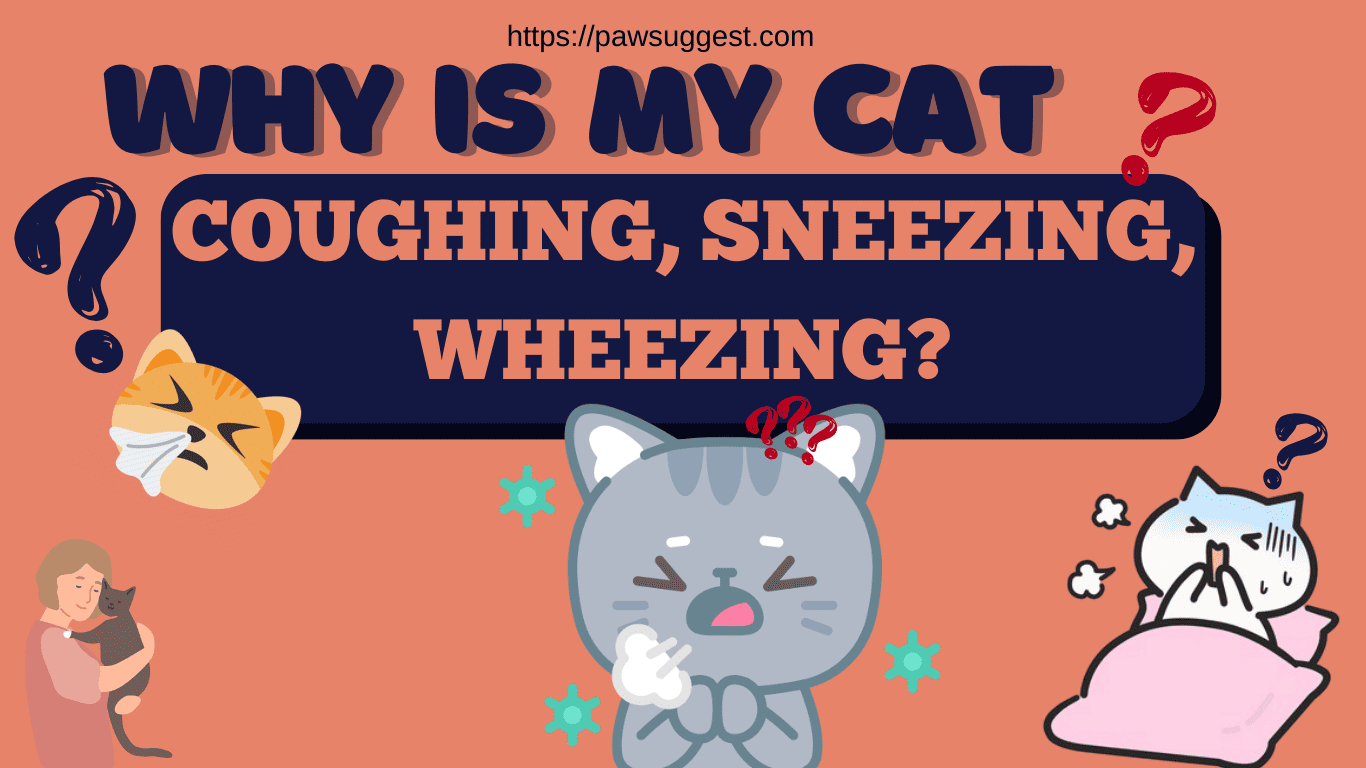
Your cat’s coughing, sneezing, or wheezing might seem harmless at first, like an occasional sneeze from dust or excitement. However, if these symptoms persist or occur frequently, it’s likely a sign of an irritating issue in the throat, lungs, or airway.
Since cats are notoriously good at hiding illness, it’s important to know the right time to call a vet if this lasts a while or becomes severe. These symptoms could result from foreign matter like fur or dust, irritating their pharynx, larynx, or bronchi.
While a simple sneeze might suffice for clearing out irritants, strange noises or frequent episodes can indicate something serious. Always check with a veterinarian, as early diagnosis and treatment ensure rapid recovery for your feline friend.

An Overview of Cat Coughing, Sneezing, and Wheezing
[su_note note_color=”#72E8E1″ radius=”18″]Cats cough, sneeze, or wheeze due to irritants, infections, asthma, or serious conditions like tumors or heart disease. Persistent symptoms require veterinary attention for diagnosis and treatment. Environmental adjustments, medications, or surgery may be needed, ensuring prompt recovery and prevention.[/su_note]
Why Is My Cat Coughing, Sneezing, and Wheezing?
Cats may cough or sneeze just like people do, often due to irritants such as dust or particles that affect the cat’s airways. This protective reflex helps rid the body of unwanted debris, but persistent coughing or wheezing could signal a more serious issue. Environmental factors like a dusty litter box or secondhand smoke might trigger a coughing fit, while a tickle in the nose from mucus or allergens can lead to sneezing.
- Upper respiratory infections are a common cause of combined coughing and sneezing in cats, especially when nasal passages become blocked.
- Asthma, marked by rapid or open-mouth breathing, often includes wheezing alongside coughing.
- When a cat brings up hairballs, it may seem like they’re coughing, but it’s more about cat gagging as the digestive tract expels the material, not the respiratory tract.
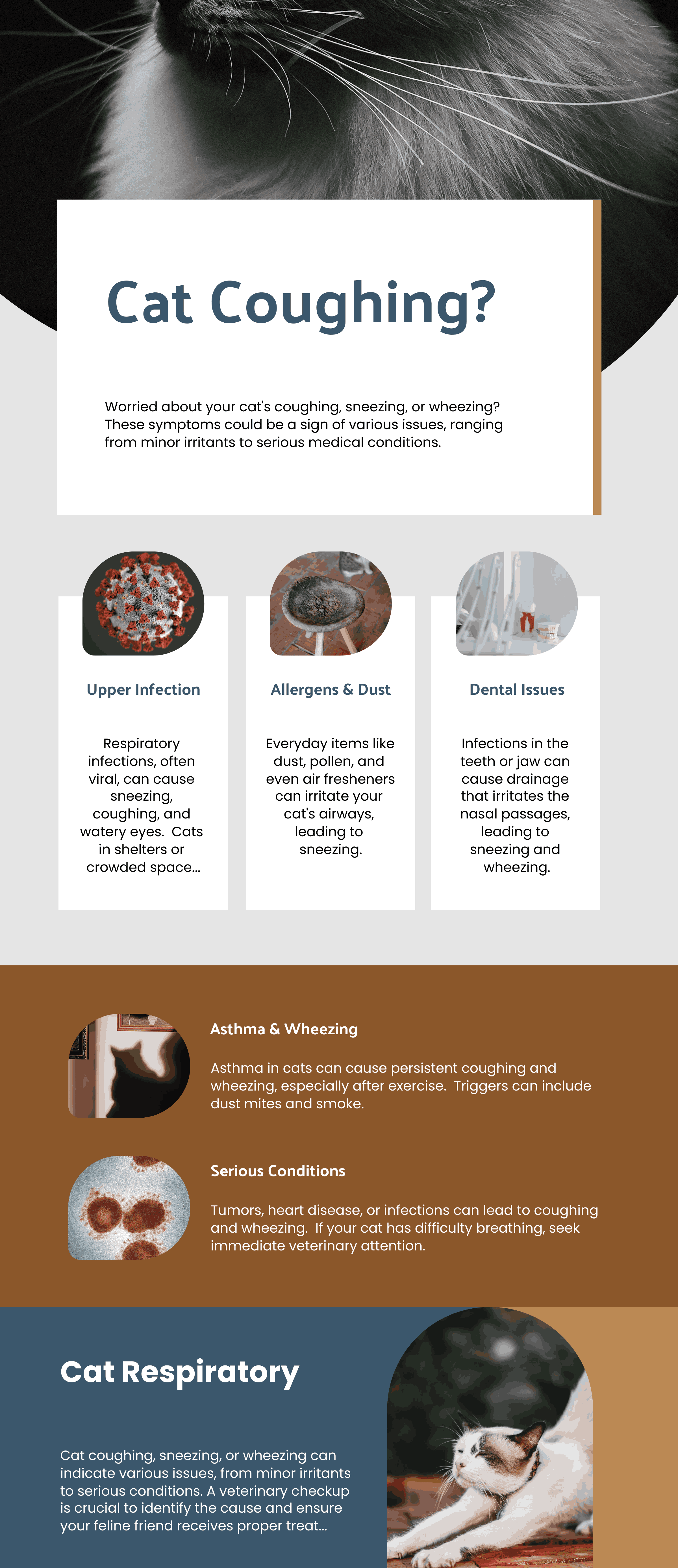
10 Causes of Cat Coughing, Sneezing and Wheezing
When a cat catches cold, it may show symptoms like watery eyes in cats, fever in cats, or diarrhea in cats. These signs could also indicate other health issues, so might also need to consult a veterinarian promptly. But before that, take a look at these causes:
1. Respiratory Infections and Viral Causes
Cats often sneeze or cough when their nasal passages are irritated by an upper respiratory infection. These infections can be caused by viruses like the feline herpes virus or feline calicivirus, which are both contagious among cats. Signs such as watery eyes in cats, fever, and a sneezing pattern are common. Cats in crowded spaces, such as shelters, are more at risk. Vaccinations and keeping your cat indoors can help.
2. Allergens and Environmental Irritants
Household dust, pollens, candles, and even air fresheners can trigger sneezing in cats. Cleaning products and cat litter with dust are often the culprit. To minimize irritation:
- Use low-dust litter.
- Clean surfaces with wet dusting.
- Avoid strong-smelling perfumes or pet sprays.
If your cat is breathing fast, it might indicate severe irritation or a reaction to allergens like mold or cigarette smoke.
3. Dental Disease and Nasal Drainage
Inflammation of the teeth roots or infections in the upper jaw can affect the sinuses, leading to sneezing or wheezing. The draining of bacteria from tooth infections can irritate the nasal passages, causing a reflexive sneeze. A vet exam is necessary to check for such underlying causes.
4. Asthma and Chronic Respiratory Conditions
Asthma in cats is marked by wheezing and persistent coughing, especially after exercise or play. It involves airway narrowing, swelling, and mucus accumulation due to triggers like dust mites or tobacco smoke. Long-term management may require medications and changes in your home environment.
5. Parasitic and Fungal Infections
Heartworms, lungworms, and fungal diseases are potential serious causes of respiratory issues. Cats with heartworm-associated respiratory disease (HARD) often show asthma-like symptoms, including coughing and lethargy. Regular use of preventative medications for heartworms can reduce risks.
6. Tumors and Nasal Obstructions
Nasal tumors can block the airways, causing persistent sneezing or difficulty breathing. Other obstructions, like foreign bodies (grass, lint), may also irritate the respiratory tract. A vet exam, including x-rays, is essential for diagnosis and treatment.
7. Pneumonia and Fluid Buildup
Pneumonia, whether bacterial, viral, or fungal, can result in a wet cough due to fluid buildup in the lungs. Conditions like pleural effusion or congestive heart failure can also lead to shortness of breath. Treatments include antibiotics, therapies, or surgical interventions.
8. Heart Disease
Heart-related issues may cause coughing and wheezing. If a cat is breathing fast, struggling during exertion, or showing muscle wasting, this could indicate conditions like congestive heart failure. Ultrasounds and electrocardiograms are used for diagnosis.
9. Bacterial and Fungal Infections
Bacterial infections from sources like litter boxes or outdoor environments can cause upper respiratory infections. Fungal infections, particularly in outdoor cats, pose risks of sneezing, coughing, and weight loss. Early detection through swabs and lab tests ensures effective treatment.
10. Stress and Contagious Viruses
Stress can trigger flare-ups of conditions like the feline herpes virus, especially in cats exposed to infected animals. Symptoms include sneezing and nasal infections, which resemble a human cold. While not transmissible to humans, these require proper management to avoid serious complications.
When to Call a Vet if Cat is Coughing?
If your cat’s coughing is frequent, worsening, or lasts for several days, it’s time to call your vet. Watch for symptoms like sneezing, nasal discharge, or rapid, open-mouth breathing, as these may indicate an upper respiratory infection. A productive cough with phlegm or sputum could point to a more serious respiratory issue needing veterinary diagnosis and treatment.
Serious Signs to Watch!
Call the vet immediately if you notice:
- Blood, wheezing, or severe nasal discharge.
- Fever, decreased appetite, or weight loss.
- Trouble breathing, lethargy, or drooling.
These can signal serious conditions like trauma, exposure to poisons, or infections affecting the respiratory or digestive tract.
When Coughing Mimics Other Issues!
Sometimes, a cough may actually be retching or gagging from a hairball in the digestive tract. If your cat’s cough is occasional and they seem otherwise healthy, it may not be an emergency. However, persistent coughing could be linked to conditions like asthma, cancers, or severe infections, which require prompt attention.
What to Do at Home!
If the symptoms are mild, monitor your cat indoors and note any changes. Using a humidifier can help with nasal passages or mild wheezing. Keep track if the cough continues or the symptoms worsen, and contact your vet if needed.
Importance of Veterinary Care
A vet checkup ensures proper care for underlying conditions like lymph node swelling, depression, or diarrhea. Treatments may include steroids, several medical solutions and antibiotics for cats, helping your cat recover and stay comfortable.
Treatment of Coughing, Sneezing and Wheezing
When a cat struggles with coughing, sneezing, or wheezing, addressing the underlying cause is crucial. A veterinarian typically begins with a physical exam and may recommend bloodwork, fecal tests, or radiographs. Identifying triggers like irritants in the environment or respiratory infections is essential.
Medications and Symptomatic Care
- Antimicrobial medications for bacterial, fungal, or parasitic infections.
- Steroids and antiviral medications to manage inflammation or asthma.
- Cough suppressants for persistent cough or breathing problems.
For severe cases like pleural effusion, fluid in the lungs may be drained using a needle or syringe. Oxygen therapy can also alleviate respiratory distress.
Surgical and Advanced Interventions
In cases of foreign objects or tumors, bronchoscopy or surgery might be needed. If cancer is detected, options include chemotherapy, radiotherapy, or immunotherapy. For heartworm disease, early prevention is key, as treatment for infected cats is limited to supportive care.
Lifestyle Adjustments and Follow-Ups
Creating a healthy environment by reducing irritants and nasal congestion with a steamy bathroom can help. Annual veterinary appointments ensure early disease detection and monitoring of lungs, heart, and airways. A vet’s guidance on lifestyle and medical management is vital for prevention and healing.
Final Takeaways
- Symptoms can result from irritants, infections, or conditions like asthma.
- Issues such as fluid in the lungs, heart disease, or tumors may be involved.
- Treatments like medications, oxygen therapy, or surgery may be needed.
- Prompt vet care ensures proper diagnosis, effective management, and recovery.
FAQs
What do I do if my cat is coughing and wheezing?
If your cat shows signs of coughing, wheezing, or shortness of breath, it could mean a serious issue like congestive heart failure. A struggling pet that can’t breathe properly needs immediate care. Don’t wait! It’s time to see the vet to ensure your feline stays healthy and happy.
What can I give my cat for sneezing and wheezing?
Treatment depends on the cause. For mild cases, vets suggest steps like using a humidifier, while severe cases may need antibiotics, steroids, fluids, or rarely, surgery.
How to treat a cat upper respiratory infection at home?
For feline upper respiratory infection treatment, ensure your cat has a comfortable, private place to rest. Gently clean any discharge from its eyes and nose, encourage it to eat, and if breathing becomes a problem, your vet may suggest a steamy bathroom with the shower running.
When should I worry about my cat sneezing and coughing?
If your cat has an ongoing or severe cough, it may be time to head to the vet. Cat coughs can signal a serious underlying illness, so a vet should diagnose the cause and start the right treatment to help your cat.

